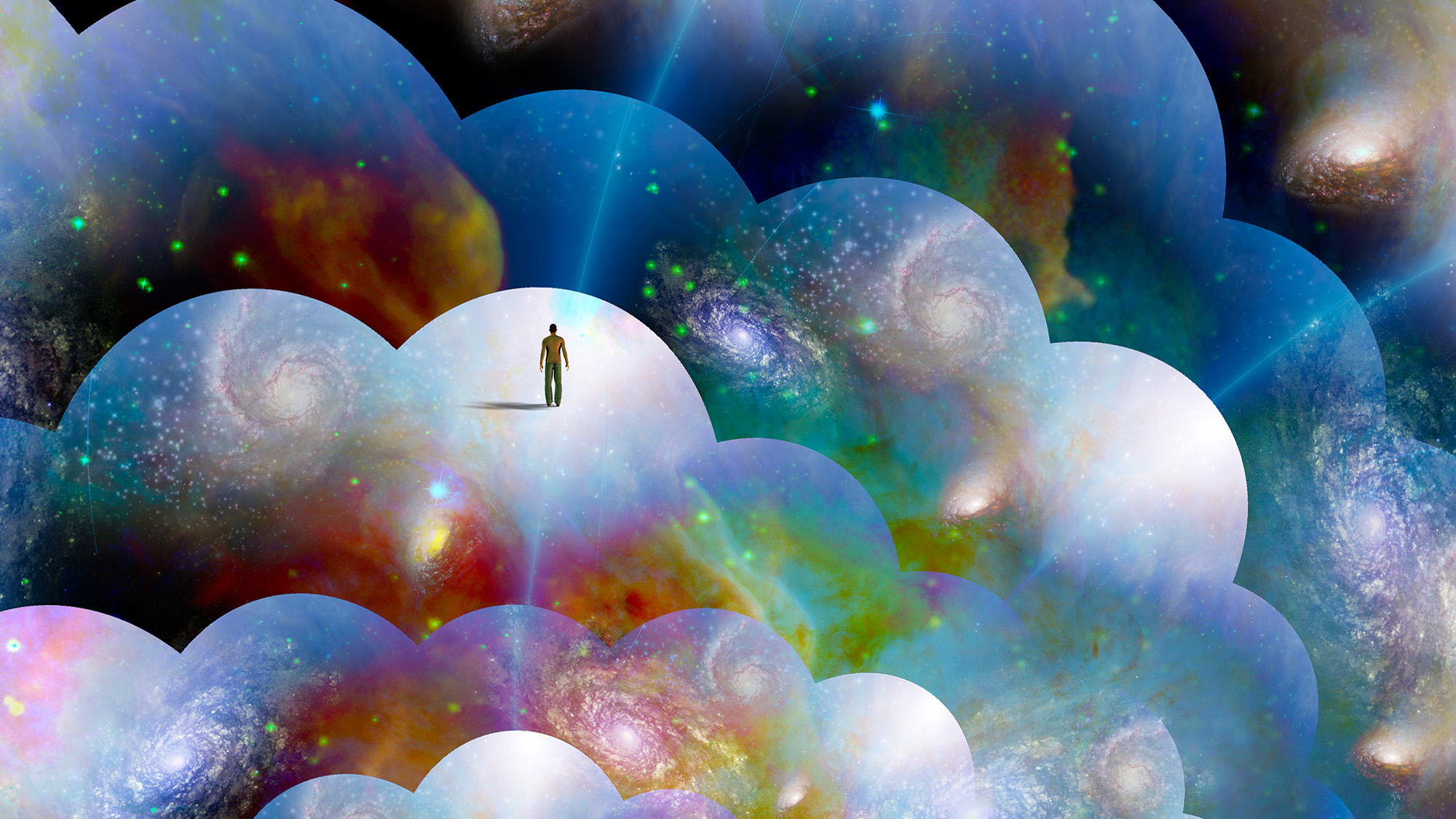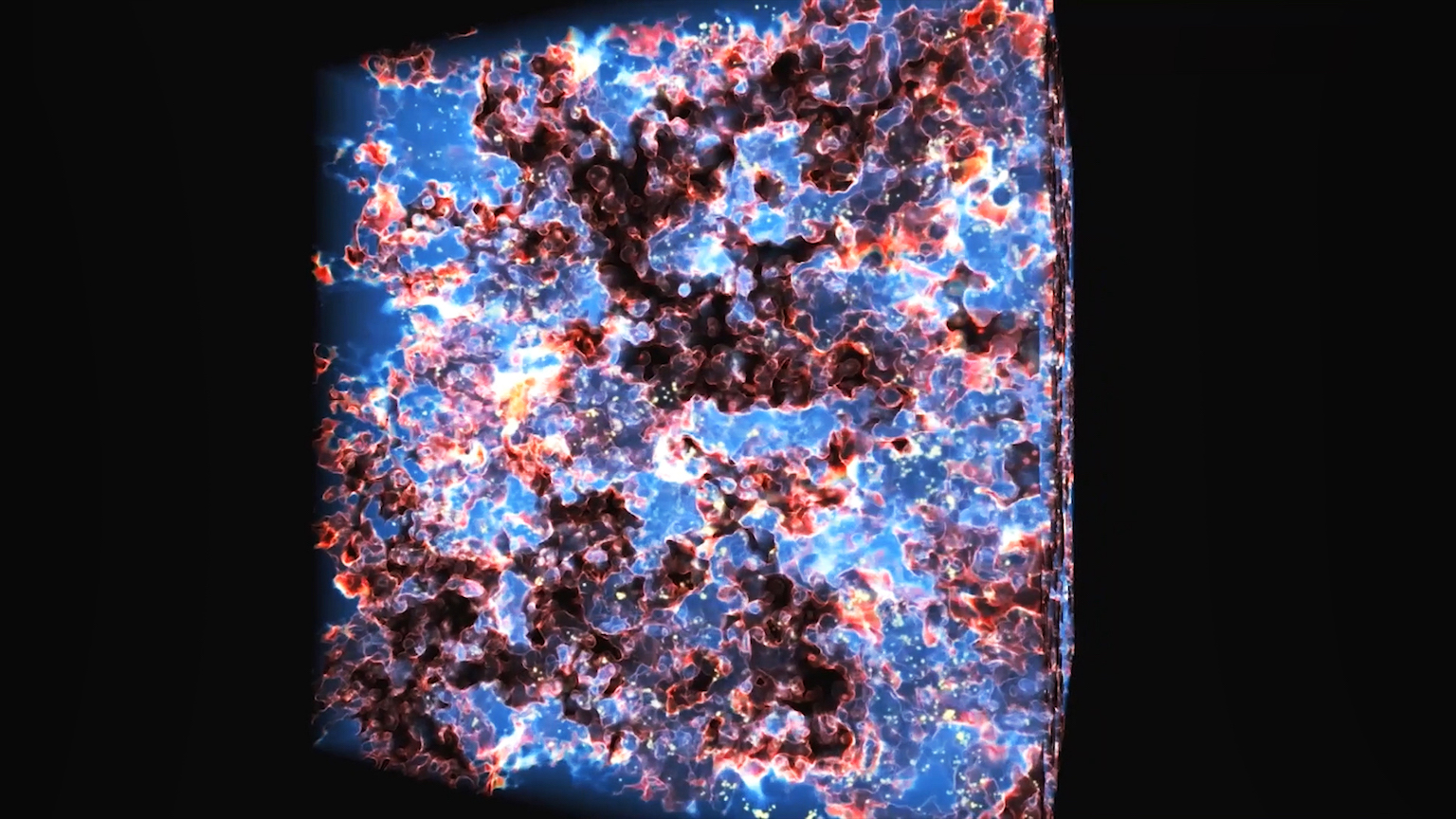How the Multiverse could break the scientific method

- The Multiverse is the fascinating hypothesis that ours is not the only Universe.
- We can never be certain that the Multiverse exists. Still, we need to venture into the unknown if we are to make any progress.
- At the core of the debate is the authority of the scientific method itself.
Today let’s take a walk on the wild side and assume, for the sake of argument, that our Universe is not the only one that exists. Let’s consider that there are many other universes, possibly infinitely many. The totality of these universes, including our own, is what cosmologists call the Multiverse. It sounds more like a myth than a scientific hypothesis, and this conceptual troublemaker inspires some while it outrages others.
How far can we push the theories of physics?
The controversy started in the 1980s. Two physicists, Andrei Linde at Stanford University and Alex Vilenkin at Tufts University, independently proposed that if the Universe underwent a very fast expansion early on in its existence — we call this an inflationary expansion — then our Universe would not be the only one.
This inflationary phase of growth presumably happened a trillionth of a trillionth of a trillionth of one second after the beginning of time. That is about 10-36 seconds after the “bang” when the clock that describes the expansion of our universe started ticking. You may ask, “How come these scientists feel comfortable talking about times so ridiculously small? Wasn’t the Universe also ridiculously dense at those times?”
Well, the truth is we do not yet have a theory that describes physics under these conditions. What we do have are extrapolations based on what we know today. This is not ideal, but given our lack of experimental data, it is the only place we can start from. Without data, we need to push our theories as far as we consider reasonable. Of course, what is reasonable for some theorists will not be for others. And this is where things get interesting.
The supposition here is that we can apply essentially the same physics at energies that are about one thousand trillion times higher than the ones we can probe at the Large Hadron Collider, the giant accelerator housed at the European Organization for Nuclear Research in Switzerland. And even if we cannot apply quite the same physics, we can at least apply physics with similar actors.
Choppy waters, quantum fields
In high energy physics, all the characters are fields. Fields, here, mean disturbances that fill space and may or may not change in time. A crude picture of a field is that of water filling a pond. The water is everywhere in the pond, with certain properties that take on values at every point: temperature, pressure, and salinity, for example. Fields have excitations that we call particles. The electron field has the electron as an excitation. The Higgs field has the Higgs boson. In this simple picture, we could visualize the particles as ripples of water propagating along the surface of the pond. This is not a perfect image, but it helps the imagination.
The most popular protagonist driving inflationary expansion is a scalar field — an entity with properties inspired by the Higgs boson, which was discovered at the Large Hadron Collider in July 2012.
We do not know if there were scalar fields at the cosmic infancy, but it is reasonable to suppose there were. Without them, we would be horribly stuck trying to picture what happened. As mentioned above, when we do not have data, the best that we can do is to build reasonable hypotheses that future experiments will hopefully test.
To see how we use a scalar field to model inflation, picture a ball rolling downhill. As long as the ball is at a height above the bottom of the hill, it will roll down. It has stored energy. At the bottom, we set its energy to zero. We do the same with the scalar field. As long as it is displaced from its minimum, it will fill the Universe with its energy. In large enough regions, this energy prompts the fast expansion of space that is the signature of inflation.
Linde and Vilenkin added quantum physics to this picture. In the world of the quantum, everything is jittery; everything vibrates endlessly. This is at the root of quantum uncertainty, a notion that defies common sense. So as the field is rolling downhill, it is also experiencing these quantum jumps, which can kick it further down or further up. It’s as if the waves in the pond were erratically creating crests and valleys. Choppy waters, these quantum fields.
Here comes the twist: When a sufficiently large region of space is filled with the field of a certain energy, it will expand at a rate related to that energy. Think of the temperature of the water in the pond. Different regions of space will have the field at different heights, just as different regions of the pond could have water at different temperatures. The result for cosmology is a plethora of madly inflating regions of space, each expanding at its own rate. Very quickly, the Universe would consist of myriad inflating regions that grow, unaware of their surroundings. The Universe morphs into a Multiverse. Even within each region, quantum fluctuations may drive a sub-region to inflate. The picture, then, is one of an eternally replicating cosmos, filled with bubbles within bubbles. Ours would be but one of them — a single bubble in a frothing Multiverse.
Is the multiverse testable?
This is wildly inspiring. But is it science? To be scientific, a hypothesis needs to be testable. Can you test the Multiverse? The answer, in a strict sense, is no. Each of these inflating regions — or contracting ones, as there could also be failed universes — is outside our cosmic horizon, the region that delimits how far light has traveled since the beginning of time. As such, we cannot see these cosmoids, nor receive any signals from them. The best that we can hope for is to find a sign that one of our neighboring universes bruised our own space in the past. If this had happened, we would see some specific patterns in the sky — more precisely, in the radiation left over after hydrogen atoms formed some 400,000 years after the Big Bang. So far, no such signal has been found. The chances of finding one are, quite frankly, remote.
We are thus stuck with a plausible scientific idea that seems untestable. Even if we were to find evidence for inflation, that would not necessarily support the inflationary Multiverse. What are we to do?
Different kinds of different in the multiverse
The Multiverse suggests another ingredient — the possibility that physics is different in different universes. Things get pretty nebulous here, because there are two kinds of “different” to describe. The first is different values for the constants of nature (such as the electron charge or the strength of gravity), while the second raises the possibility that there are different laws of nature altogether.
In order to harbor life as we know it, our Universe has to obey a series of very strict requirements. Small deviations are not tolerated in the values of nature’s constants. But the Multiverse brings forth the question of naturalness, or of how common our Universe and its laws are among the myriad universes belonging to the Multiverse. Are we the exception, or do we follow the rule?
The problem is that we have no way to tell. To know whether we are common, we need to know something about the other universes and the kinds of physics they have. But we don’t. Nor do we know how many universes there are, and this makes it very hard to estimate how common we are. To make things worse, if there are infinitely many cosmoids, we cannot say anything at all. Inductive thinking is useless here. Infinity gets us tangled up in knots. When everything is possible, nothing stands out, and nothing is learned.
That is why some physicists worry about the Multiverse to the point of loathing it. There is nothing more important to science than its ability to prove ideas wrong. If we lose that, we undermine the very structure of the scientific method.





